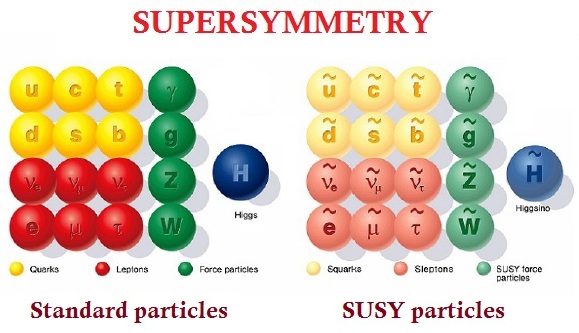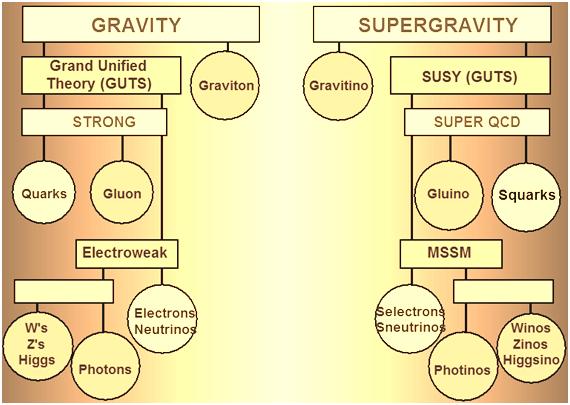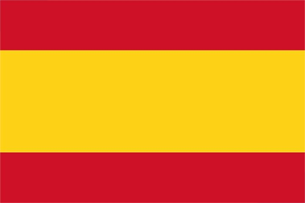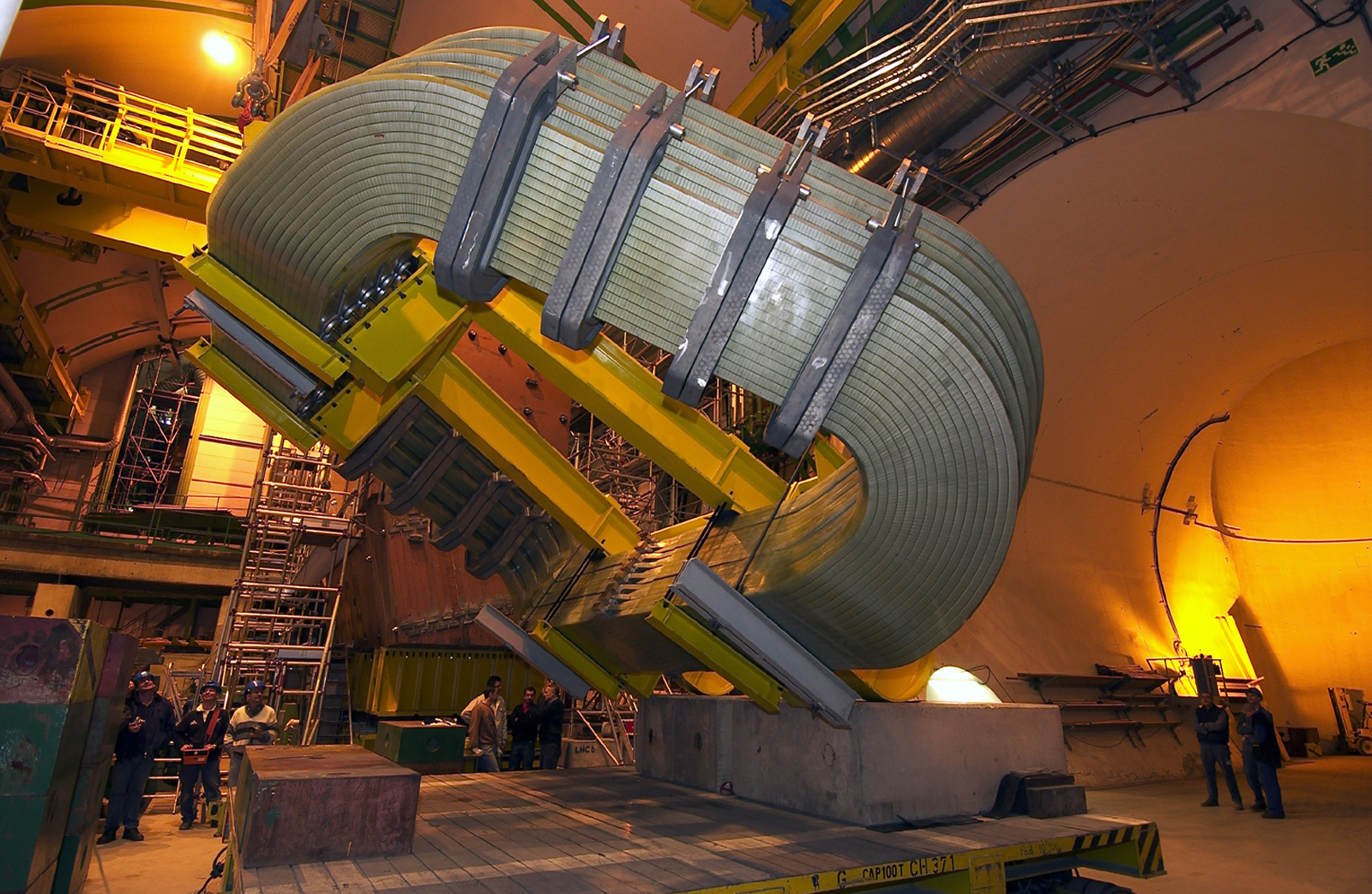Acercándonos al LHC
La supersimetría (SUSY) es una propiedad propuesta del universo. Ha sido una de las extensiones del Modelo Estándar mejor motivadas, por lo que el estudio de SUSY era un objetivo primordial del LHC.
Tras años de búsqueda y una enrome cantidad de datos acumulados procedentes de innumerables colisiones, no hay rastro de ninguna partícula supersimétrica. De hecho, muchos modelos de supersimetría están ahora completamente descartados, y muy pocas ideas teóricas siguen siendo válidas.
Muchos físicos que trabajan en Teorías de la Supersimetría quedaron desconcertados cuando no se descubrió ninguna partícula supersimétrica en los primeros tiempos del LHC, y más aún ahora que han pasado muchos años desde la puesta en marcha de este acelerador.
La falta de pruebas de la supersimetría en el LHC no significa que la idea haya muerto. Sin embargo, ahora la comunidad teórica está interesada en otras direcciones diferentes.
En esta otra sección, presentamos una de las ideas más de moda actualmente en el esfuerzo por ir más allá del Modelo Estándar.
A pesar de esta situación, creemos que es interesante comentar brevemente las ideas esenciales en que se sustenta la supersimetría.
Existen muchas variantes, y cada una de ellas predice fenomenoloxías diferentes, pero la idea esencial es que la Supersimetría implica que
Por ejemplo, la supercompañeira del electrón (fermión) es el llamado selectron (bosón). Las supercompañeiras de un quark (fermión) es un squarks (bosón), mientras que la de un fotón (bosón) es el fotino (fermión). Estas partículas supersimétricas, o spartículas, tienen la misma carga pero obviamente spin diferente al de su compañera. Así, por ejemplo, el electrón tiene spin 1/2, mientras que el selectrón tiene de spin 0: y el fotón tiene spin 1, mientras que el fotino tiene spin 1/2.

Todas las superpartículas tienen grandes masas y se supone que se originaron en los primeros instantes del Big Bang. Puesto que no tenemos partículas supersimétricas observadas la baja energía, debemos suponer que son inestables, y que en esos primeros instantes del Big Bang se desintegraron en pares (superpartículas-antisuperpartículas, por ejemplo) dando lugar a partículas supersimétricas con una masa en reposo menor. La única partícula que podría sobrevivir la este proceso es la partícula más ligera que no puede decaer en otras partículas. Son las llamadas LSP (lightest supersymmetric particle) que además deberían ser neutra eléctricamente. Esto significa que nuestro Universo estaría lleno de estas partículas masivas, neutras y estables, que por tanto serían buenas candidatas a formar la materia oscura.
Las partículas supersimétricas podrían proporcionar un camino para la unificación (Grand Unification, grand unified theory, GUT) de tres de las fuerzas fundamentales: la electromagnética, la endeble y la fuerte, que estaría ubicada la energías extremadamente altas de la orden de 1016 GeV.

La Supersimetría, en particular una versión llamada modelo supersimétrico minimal, alcanza esa unificación de una manera más natural, Predí 5 tipos diferentes de bosóns de Higgs lo que implica un proceso más complicado para comprender como las partículas adquieren masa, si lo comparamos con el Modelo Estándar que solamente precisa de un Bosón de Higgs.
Si esta teoría fuera cierta, el LHC debería ser capaz de producir estos compañeros supersimétricos en sus colisiones, dado que las su masas deben estar en el rango de energías en el que el LHC trabaja (cerca ya de los 14 TeV). Los dos experimentos más grandes de él LHC (ATLAS y CMS), denominados “de carácter general”, han desarrollado un programa muy extenso de búsqueda de supersimetría diseñado para, en caso de que SUSY sea correcta, detectar su señal.
Pero volvemos a recordar que tras años de búsqueda y una enorme cantidad de datos acumulados procedentes de innumerables colisiones, no hay rastro de ninguna partícula supersimétrica.
|
AUTORES Xabier Cid Vidal, Doctor en Física de Partículas (experimental) por la Universidad de Santiago (USC). Research Fellow in experimental Particle Physics en el CERN, desde enero de 2013 a diciembre de 2015. Estuvo vinculado al Depto de Física de Partículas de la USC como becario "Juan de la Cierva", "Ramon y Cajal" (Spanish Postdoctoral Senior Grants), y Profesor Contratado Doctor. Desde 2023 es Profesor Titular de Universidad en ese Departamento (ORCID). Ramon Cid Manzano, catedrático de Fïsica y Química en el IES de SAR (Santiago - España), y Profesor Asociado en el Departamento de Didáctica de Ciencias Experimentales de la Facultad de Educación de la Universidad de Santiago (España), hasta su retiro en 2020. Es Licenciado en Física, Licenciado en Química, y Doctor por la Universidad de Santiago (USC).(ORCID). |
CERN |
LHC |
NOTA IMPORTANTE
Toda la Bibliografía que ha sido consultada para esta Sección está indicada en la Sección de Referencias
© Xabier Cid Vidal & Ramon Cid - rcid@lhc-closer.es | SANTIAGO (ESPAÑA) |



